
JOURNAL
documenting
&
discovering joyful things
Our favourite new children's book
 Last week my first-blogging-and-then-real-life friend, children’s book author Zanni Louise, sent my children an advanced copy of her new story, Archie and the Bear.
I can't even tell you how much we love this story. Especially Ralph, who is three, and for whom it seems to have struck a wonderful chord. The story is at once magical and mysterious, and also heartwarming and homely.
Last week my first-blogging-and-then-real-life friend, children’s book author Zanni Louise, sent my children an advanced copy of her new story, Archie and the Bear.
I can't even tell you how much we love this story. Especially Ralph, who is three, and for whom it seems to have struck a wonderful chord. The story is at once magical and mysterious, and also heartwarming and homely.
Archie and the Bear is about celebrating imagination. Just going with it.
Yesterday, Ralph found a piece of ribbon and asked me to tie it around his forehead. "It is a cap to make me more super-y," he informed me. Once I had tied the ribbon on he straightened his back and balled his fists. "You may call me," he announced grandly, "Super Boy." And he stayed in-character as Super Boy for the entire day, saving the day from all kinds of super-villains both seen (Scout) and unseen (the cat), and demonstrating a dizzying array of super-powers to combat the challenges besetting him on his heroic journey.
Nobody told him "You don't really have super-powers," or "You're only a pretend super-hero."
There are plenty of studies to remind us that for children, the benefits of imaginative role-play are numerous, helping children teach themselves impulse regulation, language development, social skills, conflict resolution, and ways to resolve real-life tensions and fears.
But I also think day-dreaming is pretty special for us grown-ups as well. Do you ever like to imagine out loud what would happen if...? Imagine if I won a million dollars... Imagine if we moved to France... Imagine if I quit my job and pursued my dream full time...
Those imaginings are like little head-holidays. They are like trying on costumes and testing out other lives, knowing that we can return to the safety of our own lives any time we like.
But how crappy is it when you start a sentence with "Imagine if," and the person beside you ends it with an ice-cold bucket of reality? You can't afford it. We don't have the time. You'd be bored in a week. Ok maybe they're right (or maybe they're not), but that's not the point. I'm dreaming here! Just go with it!
On the weekend, Mr B has promised Ralph that we will go to the shops to buy more ribbons, so we can all be superheroes together. So look out for that impressive scene if you spot the Bulger family walking down the street this Easter.
In the meantime, at Ralph's request, we will probably be reading Archie and the Bear every night, a story about a little boy who is not wearing a bear-costume (because he IS a bear).
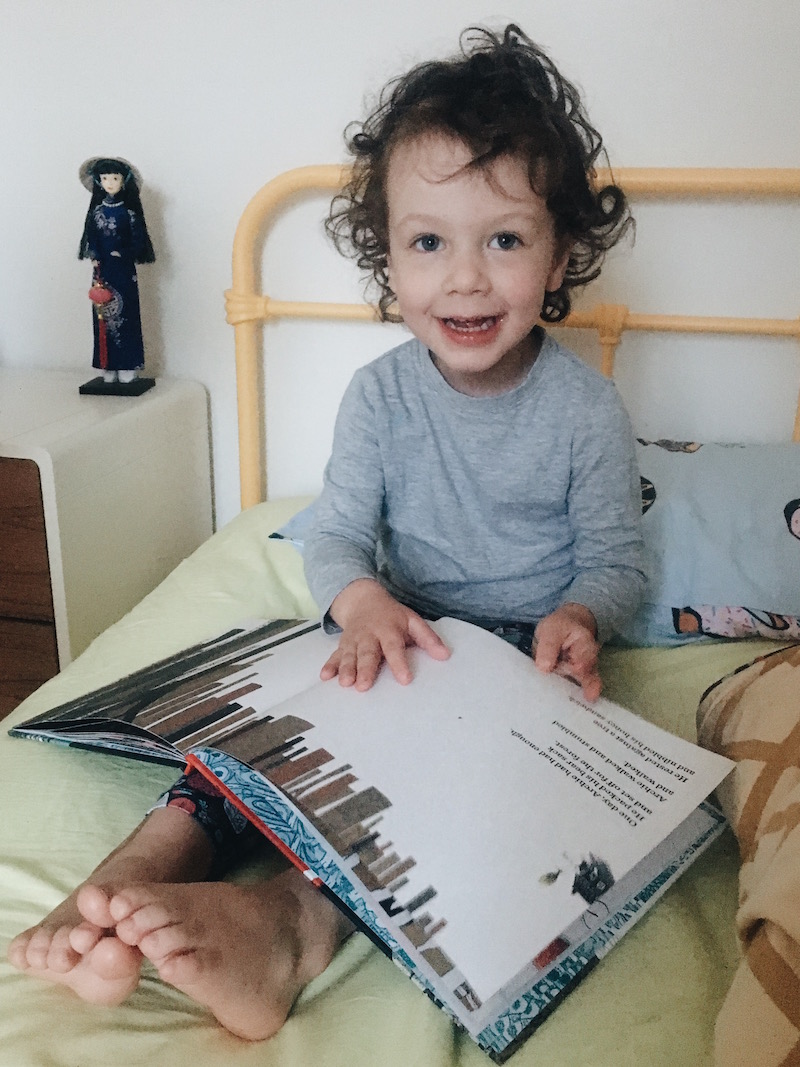
Here is a little flip-through of this beautiful book, created by its UK-based illustrator David Mackintosh. Take a look at the fabulous scale-play, with little Archie sometimes appearing as small as an ant in the deep dark forest, but as big as a bear in bravery, imagination, and friendship.
https://youtu.be/PYmUeFxg6HY
Archie and the Bear will be officially released next month. Zanni sent this book to my children as a gift, but I was not paid to write about it, nor was there any requirement that I even mention it at all. I am just so seriously in love with this beautiful story that I couldn't help myself.
Ok happy Easter. See you on the other side!
Spiders, bedtime stories, and what's the fuss about Henry Fussy?
 We have been reading Charlotte's Web to the children at bedtime. Last night was the final chapter, and the whole book has been every bit as magical and sad and beautiful as I remember from my own childhood.
We have been reading Charlotte's Web to the children at bedtime. Last night was the final chapter, and the whole book has been every bit as magical and sad and beautiful as I remember from my own childhood.
Scout was enthralled from beginning to end. I wasn't confident of this when we started: books from this era move at a slower pace to those written these days (slower than, for example, Monsters Wear Underpants, a tremendous favourite of Ralph's - thanks Mum), and Scout is only four after all.
But she soaked it all in, even the long passages about the changing of the seasons, the subtle shifts on a farm from one month to another. Even the brutal honesty about life on the land, about how spiders eat, about love and loss. It was precious to see her settle into this slower pace, resting up against my side and dreamily playing with a thread on her pyjamas as she listened, always begging for more when each chapter ended.
However, here's something I did not even remotely pick up on when I read this book as a child: Henry Fussy. How did I not notice Fern's complete desertion of her best friends, for a boy called Henry Fussy? I'm guessing I must have been so caught up in Wilbur's and Charlotte's stories that I failed to notice that Fern was having a story of her own, a coming-of-age journey that took her away from the barn and onto a Ferris Wheel instead.
And I get it. Fern wouldn't be the first person to neglect her friends for a crush, and she won't be the last. But...
Fern happens to be the only human on the entire planet with access to the MAGICAL WORLD OF TALKING ANIMALS.
Nope, not enough. Henry Fussy is over there.
Well how about this: Wilbur, who she claimed to love "more than anything else in the whole world" is going to be KILLED BY FERN'S UNCLE, unless Charlotte's plan to save him works.
Henry Fussy paid for her ticket on the Ferris Wheel, so she didn't have to spend her own money.
We learn Charlotte is dying. She is also about to become a mother, but will not live to see her sweet babies.
Fern says this has been the best day of her life.
THE PLAN WORKED! Wilbur is getting a special medal, Fern's Uncle has never been happier, Wilbur's life has been saved. The entire family goes crazy with pride and excitement.
Fern wants money so she can pay for Henry Fussy's ticket on the Ferris Wheel.
And can I finally please point out, Fern is EIGHT. Girl, we need to talk.
After we finished reading Charlotte's Web last night, we talked a little bit about friendship and love and death, and it was a little bit sad but a lot beautiful. I kissed the children, turned out the light, and went downstairs to make my dinner alone as Mr B was working late. Then about half an hour before my bedtime, he came home.
Pale, shaking, and giggling in a high-pitched, slightly hysterical way (you know, like Floki from Vikings, if you happen to watch that show). Turned out just as he was parking the car, a giant huntsman spider the size of his palm had scuttled across the windscreen of the car.
Then it disappeared. Somewhere in the dark. On the car. Waiting.
Now I happen to think Mr B is all man, but that spider knew better, and it reduced him to the state of a terrified little old lady. Me too, when he told me about it later. Oh man, I was terrified just from the telling.
Just as Mr B was about to venture out of the car into the dark, where the spider waited unseen - literally a nanosecond before Mr B opened the car door - the spider appeared again, millimetres from his face, crawling down the outside of the car window. Slowly. Big, hairy underbelly and powerful legs moving across the glass and across Mr B's petrified face. If he'd opened that door even one second earlier, the spider would have landed on his head.
He scrambled over to the passenger seat and climbed out that door, ran back around to the driver side and whacked the spider away (don't hate - neither of us could have got back inside that car otherwise), and came inside to giggle hysterically in the lounge room. Then he went back outside again to check whether or not he'd left the headlights on in all the shock.
When at last he came back inside for good and sat down, we both started laughing, because from time to time we like to dream about moving to the country: a tree-change and a slower pace of life. And then a spider crawls across the windscreen of our car and we remember that we are literally the worst people in the world to ever attempt life in the country. Completely pathetic. Nature wimps.
But in our defence, "That was no Charlotte," Mr B said.
Dreams + links
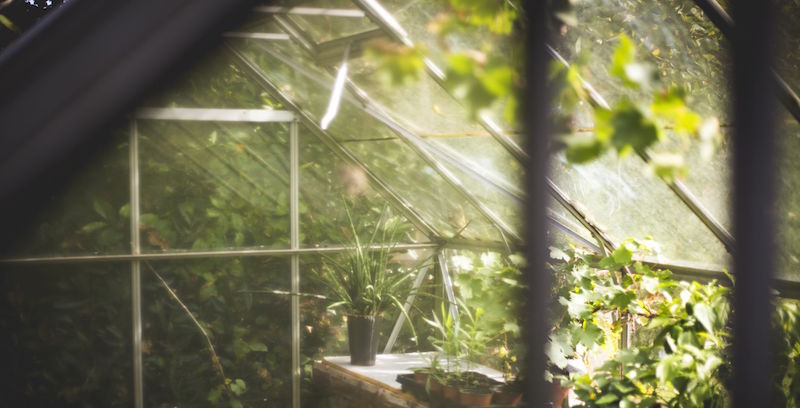 I spent last night dreaming about a tree change. I don't know what's gotten into me because I really love where I live. I mean, I really love it. And I know that I would get bored in the country. I've lived it before so it's not like I have rose-coloured glasses on.
I spent last night dreaming about a tree change. I don't know what's gotten into me because I really love where I live. I mean, I really love it. And I know that I would get bored in the country. I've lived it before so it's not like I have rose-coloured glasses on.
And yet, I spent the entire night browsing real estate websites instead of working, looking for country homes in the high country. Somewhere where the seasons are REAL seasons, where it snows in winter. Somewhere with space for the children to run and play and grow. Room for a piano. An office for me. A downsized, slowed-down life in which we could see Mr B every day, and each of us would have the financial and emotional freedom to pursue the things we love, not just the bills we need to pay!
I sent a link to one of the homes to Mr B, who was at a work function, telling him "I want to move here." He wrote back "Are you on drugs?" because, well, he knows me. "Let's give it a go," I said.
But then I thought about the schools we wanted the children to attend, and there was nothing like those schools in the escape destinations I was exploring on my computer. And I started to think of all the other things we wanted to do for them and the opportunities we wanted them to have, and I began weighing the pros and cons of life for City Mouse Bulgers and Country Mouse Bulgers up against each other, and it all became dizzyingly confusing.
So instead I closed the computer and opened a bottle of cheap plonk and watched TV while I waited for Mr B to come home from yet another work function, and decided life here wasn't all that bad, really.
In the meantime, revisiting something I used to do every Friday, here are five of my favourite things of late, for your hump-day viewing and reading pleasure.
* Tiny tree-houses in pot-plants
* "Instead of sharing another selfie, I shared all my books with the world."
* Shakespearean quotes on stamps
* The day the plants took over New York
* Build your own street library!
Image credits: photo by Thomas Verbruggen, licensed for unlimited use under Creative Commons
In which we visit Australia’s only booktown and purchase a fake pearl necklace, some plastic toys, and no books
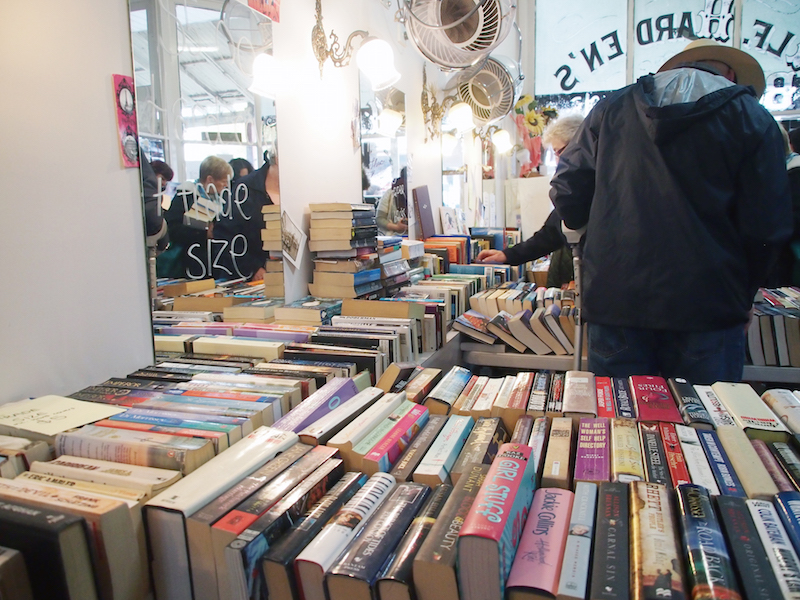
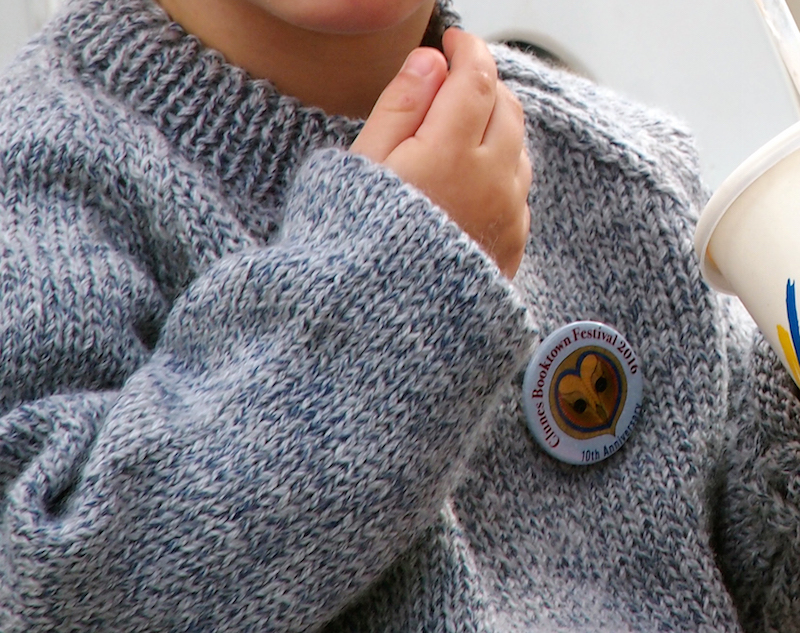
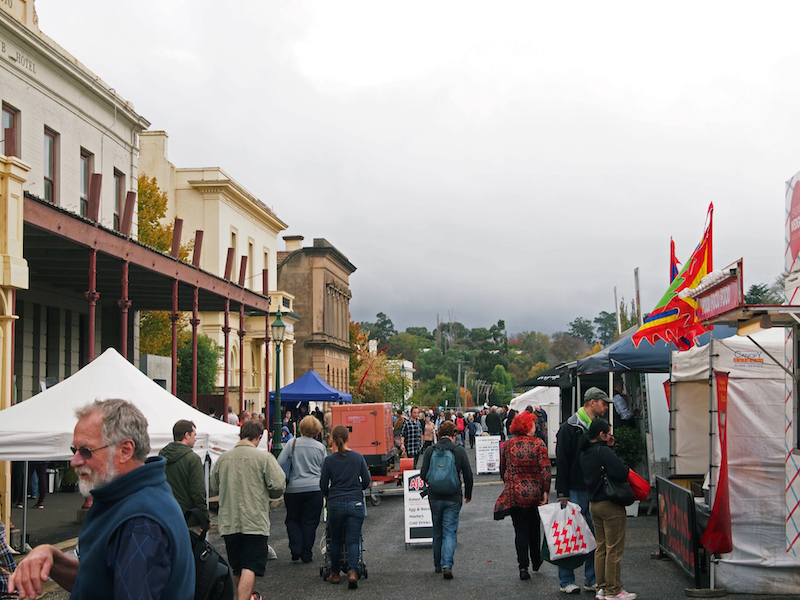
Book Town, defn: "A Book Town is a small rural town or village in which second-hand and antiquarian bookshops are concentrated. Most Book Towns have developed in villages of historic interest or of scenic beauty." International Organisation of Book Towns (IOB)
When gold was first discovered in Victoria, it was discovered in the pretty little village we now know as Clunes. Today, Clunes is home to 1600 people... and at least 15 bookstores. It is the only officially recognised "booktown" in the southern hemisphere, and one of only 17 in the world.
Once a year, this already very-literary town spills its books out into the streets, and literature completely takes over the town, for the Clunes Booktown Festival. I'm not kidding. You walk into the local hairdressing salon, complete with old-fashioned hair-dryers on the wall, and the rest of the salon is filled with books, wall to wall. Nearby at an antique store, furniture and curios have been moved out of the way to make room for more books. And inside the local cafes? You guessed it, more books. There are books on tables in the street, in market-stalls that line the middle of the road, out the front of the museum, in the post office, and spilling out of residents' garages.
Actors perform Shakespeare on a makeshift stage made out of a ring of hay-bales, children learn the antique art of book-binding, and storytellers and author-talks and book-signings continue throughout the day. The air is filled with the delicious smoke of a hundred food stalls and cafes and bakeries and coffee carts, and all the dogs look happy and the children even happier. It is bustling but not impossibly crowded, and essentially it is my idea of heaven.
When we visited Clunes on the weekend, the rain held off but made mist around the surrounding hills. The streets were wide and the gold-rush era architecture absolutely stunning, with original painted signage still on many of the shop windows and walls. I ate a pulled-pork-and-coleslaw filled roll at the Bread and Circus Provedore that I would recommend to anyone.
The only fly in my personal book-browsing, book-buying ointment turned out to be my "parent" status, since it would appear that hunting for books amidst piles of other books for hours on end is not something that the average toddler likes to do. Even when you give them spending money and say "go for it." Who knew? But since I happen to believe that being a parent is the best thing ever, even better than shopping for books, I'm not about to change that status any time soon.
So we went to the Clunes Booktown Festival and bought a double-string of fake pearls (Scout), a Peppa Pig activity-book with plastic duck toys (Ralph), delicious lunches for four, chocolate ice-cream (Scout), a chocolate milk-shake (Ralph)... and no books.
Yep, not one. But we're going back next year!
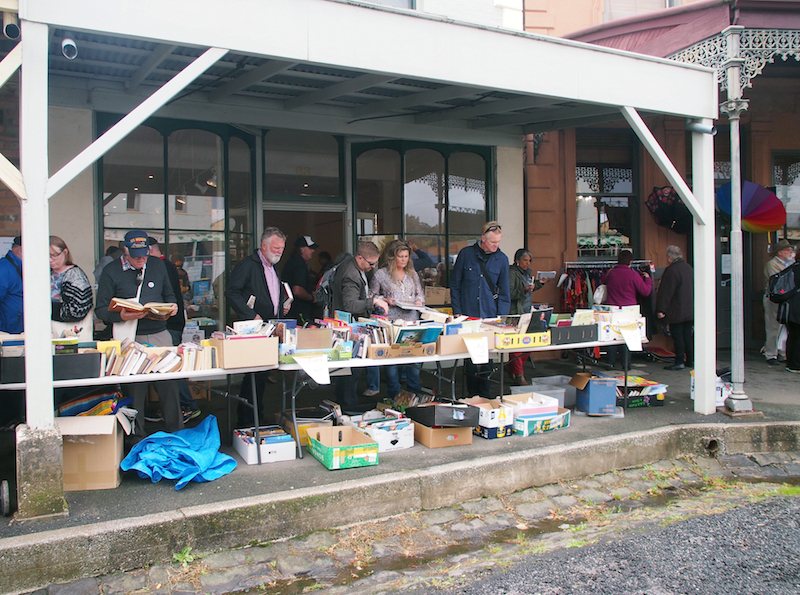
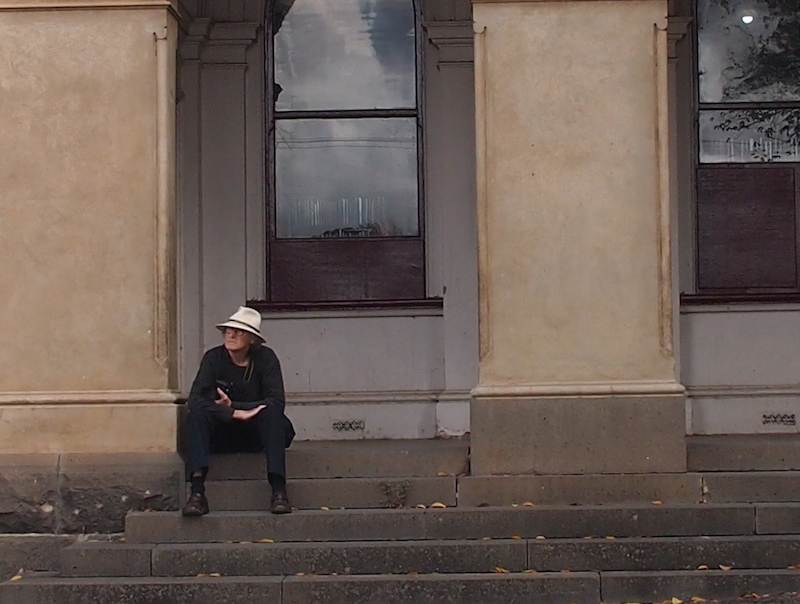
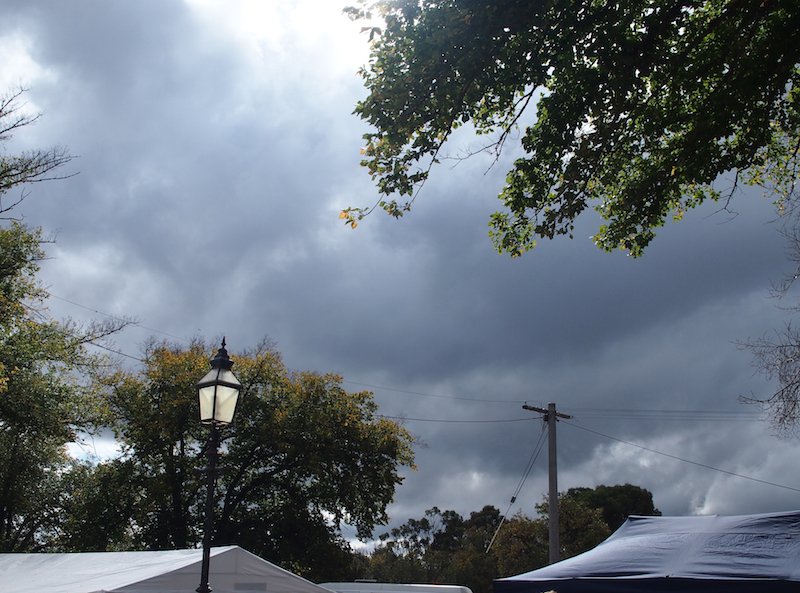
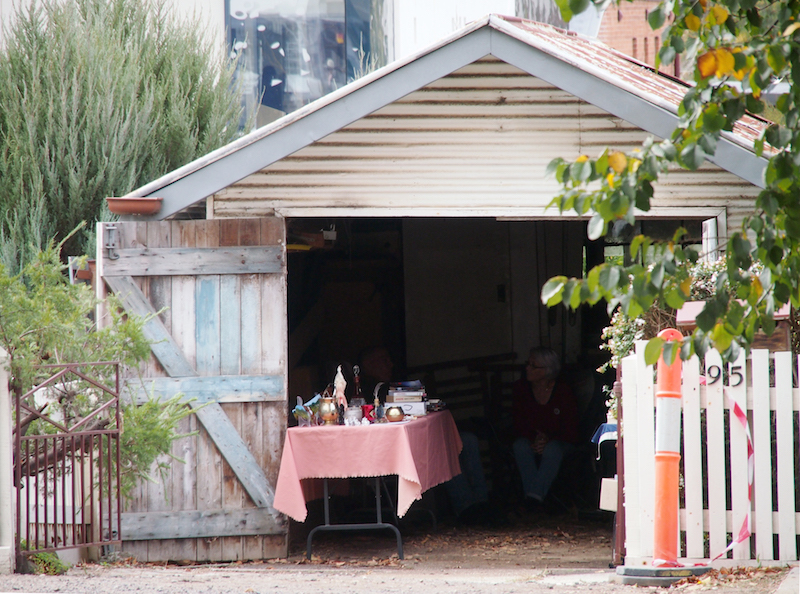
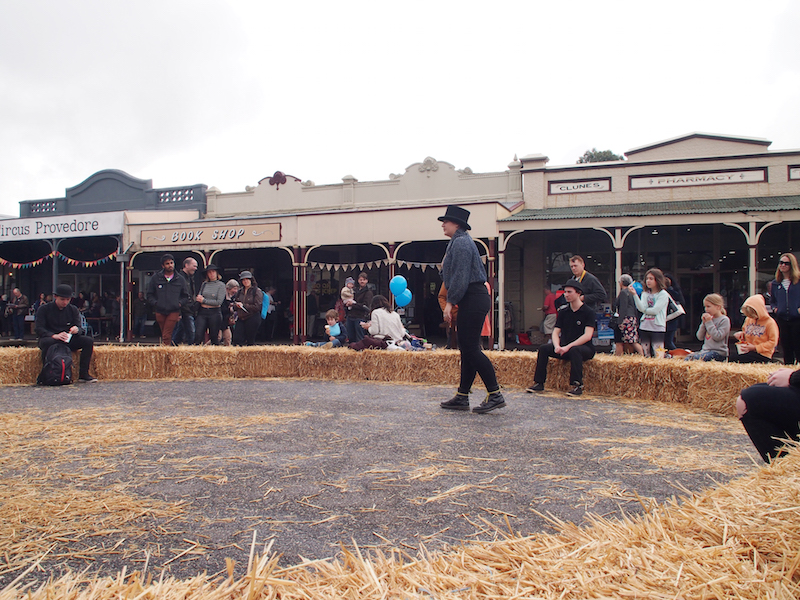
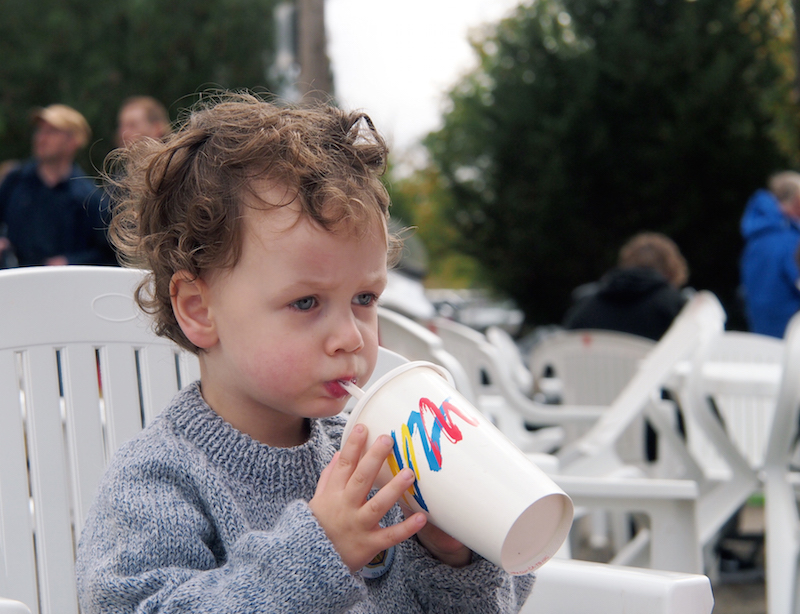
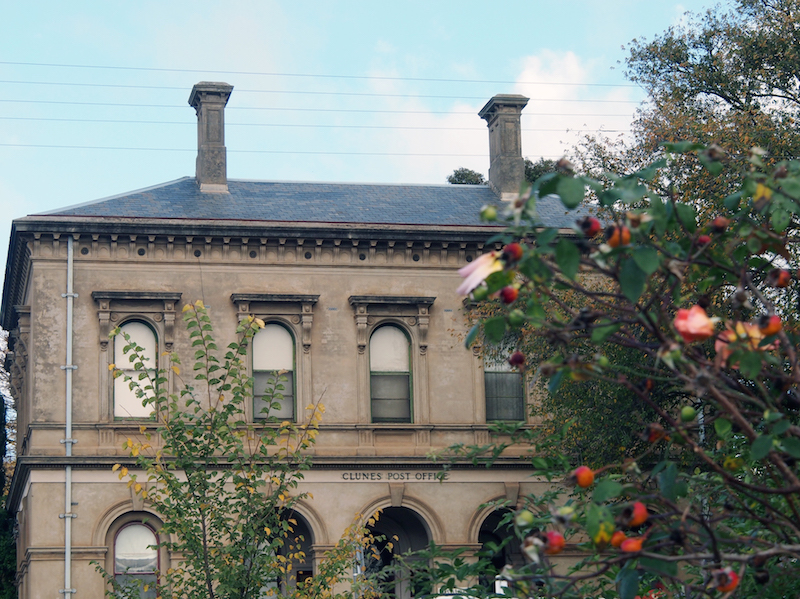
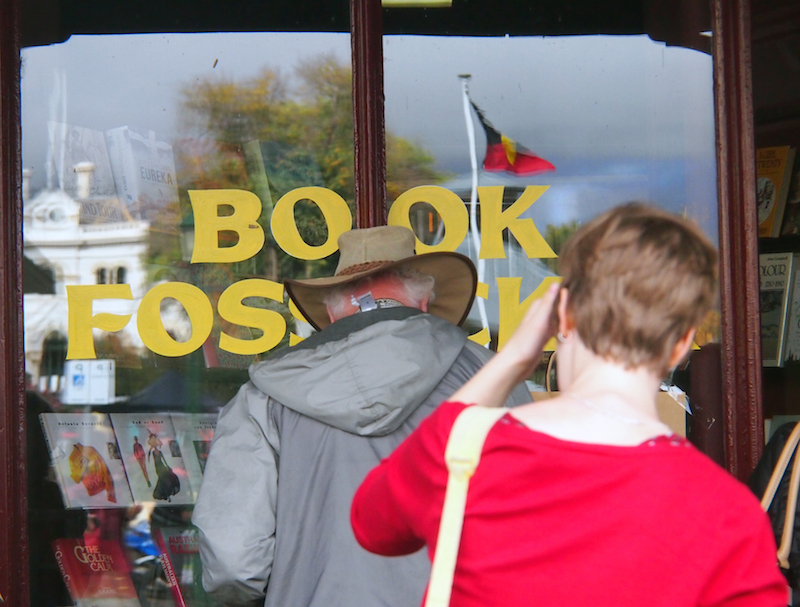
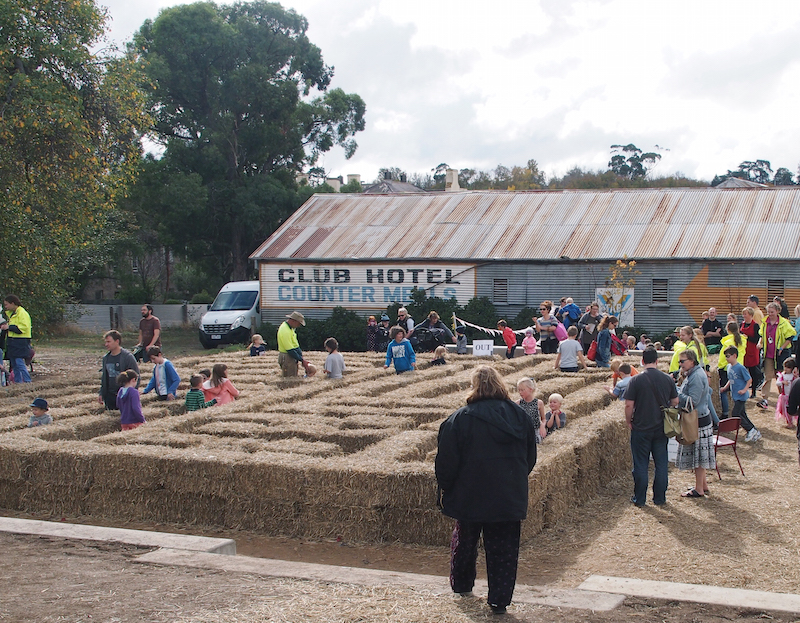
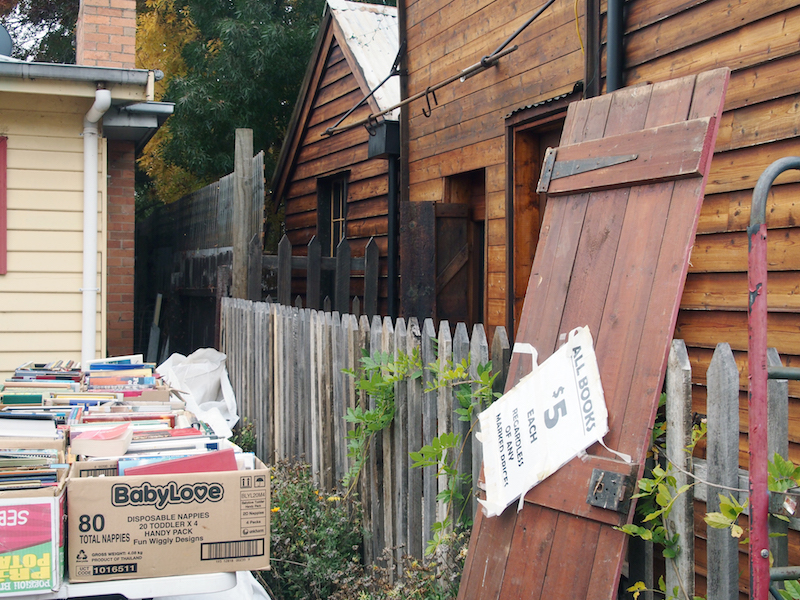
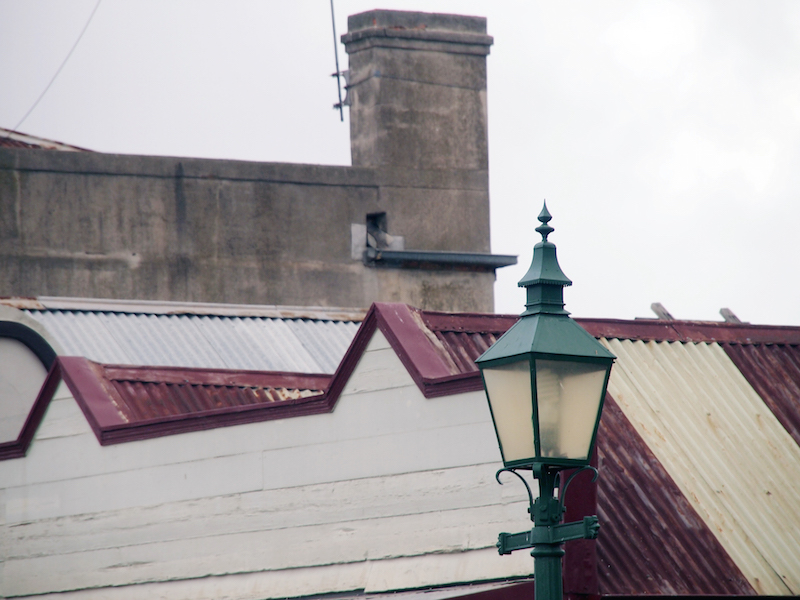
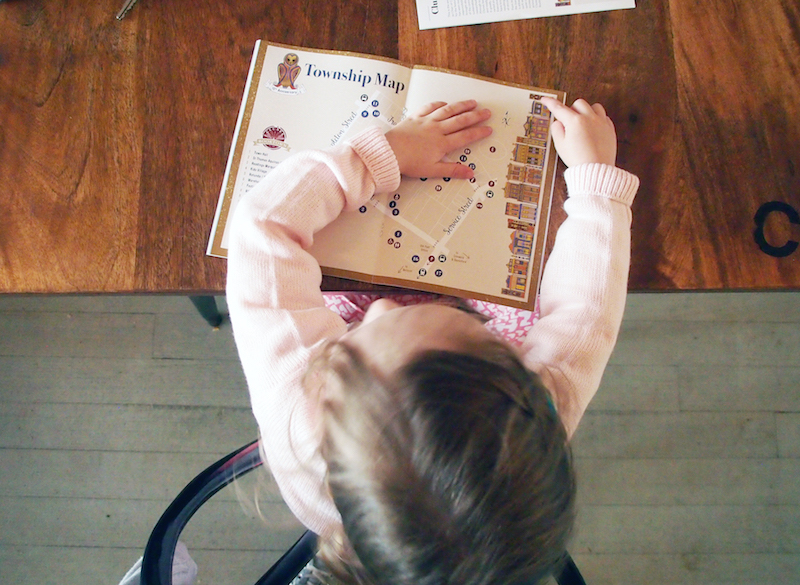
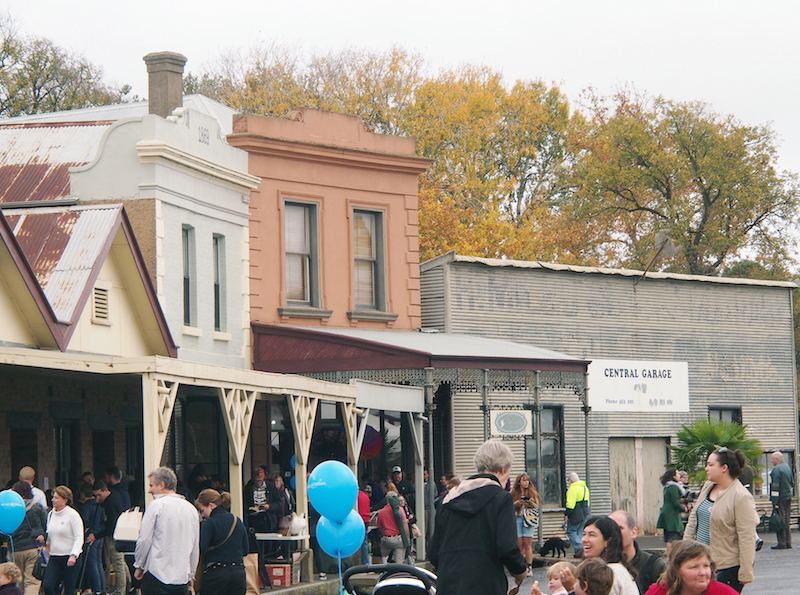
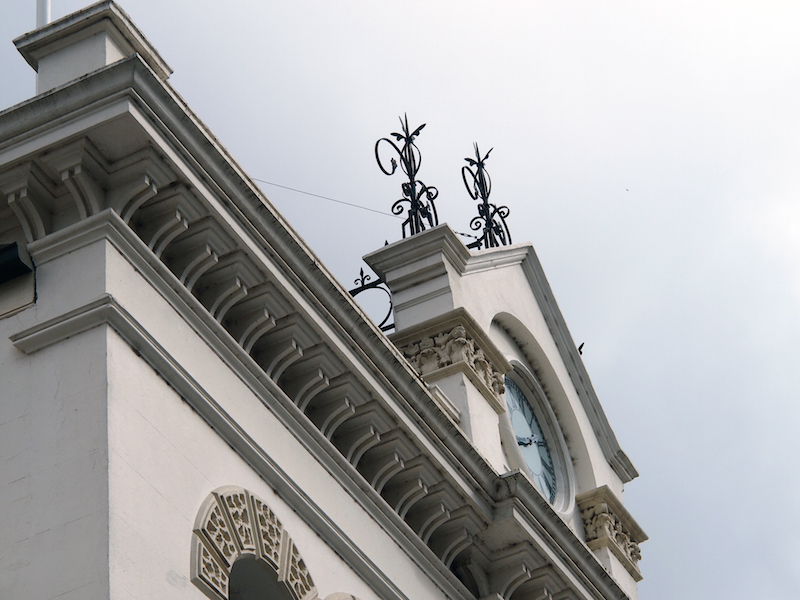
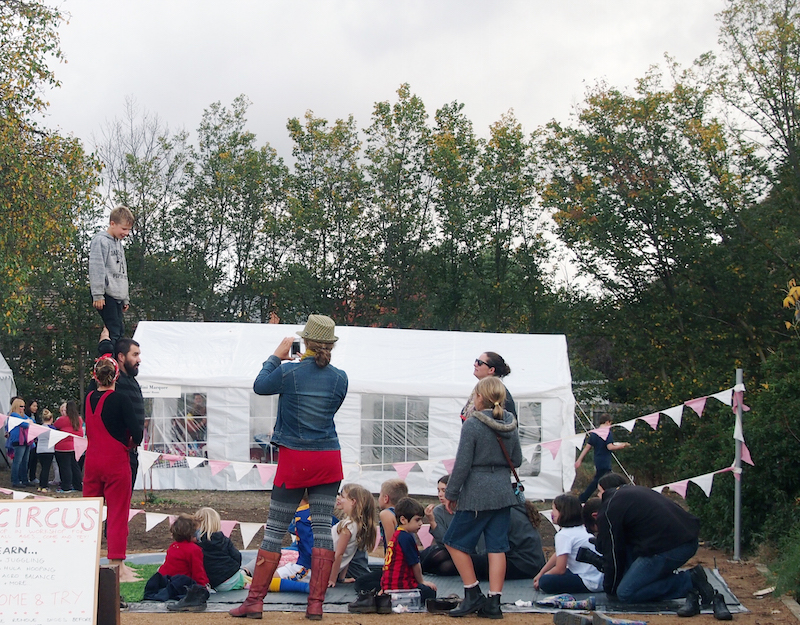


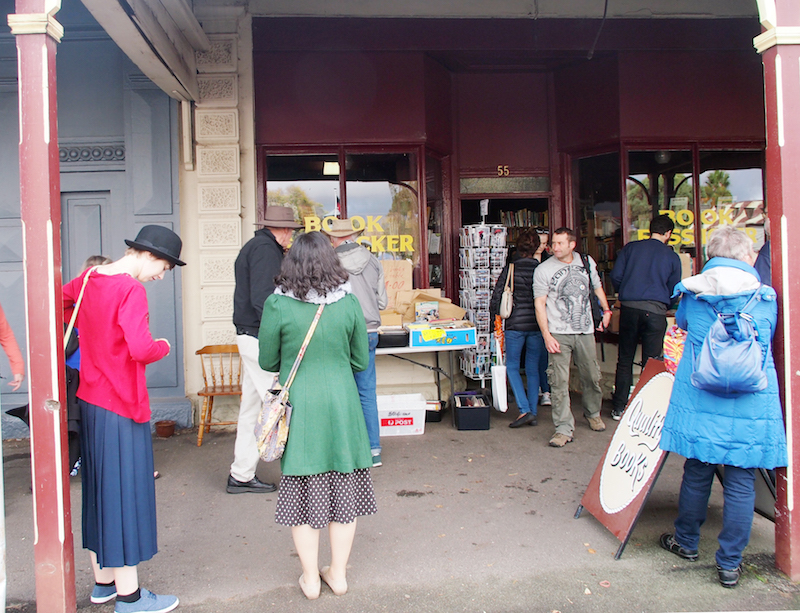
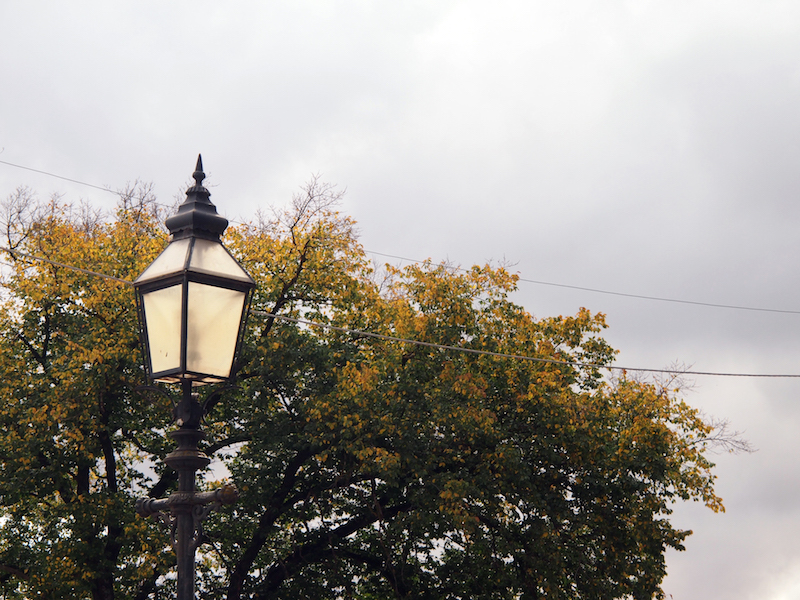

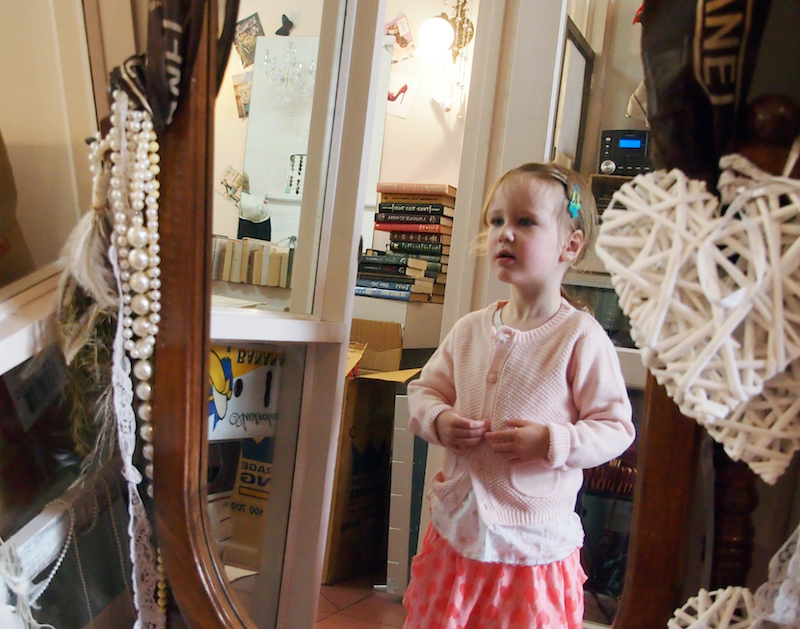
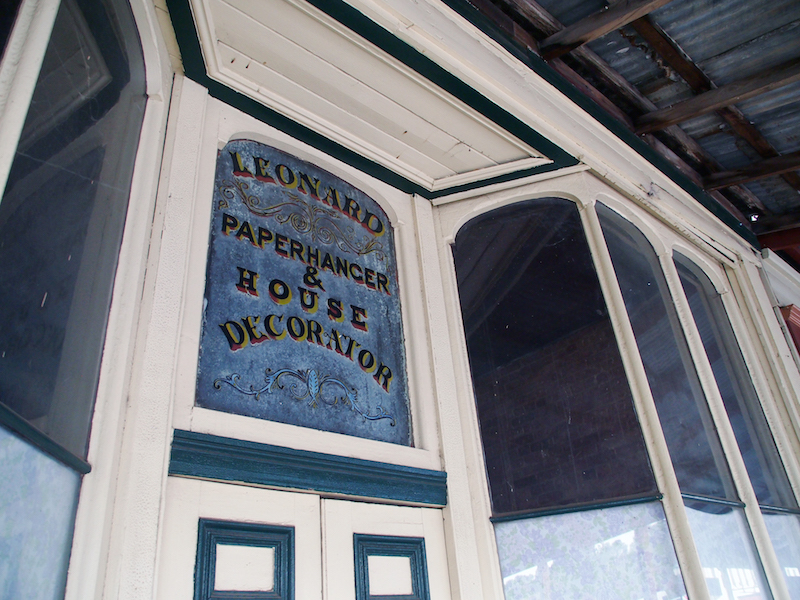
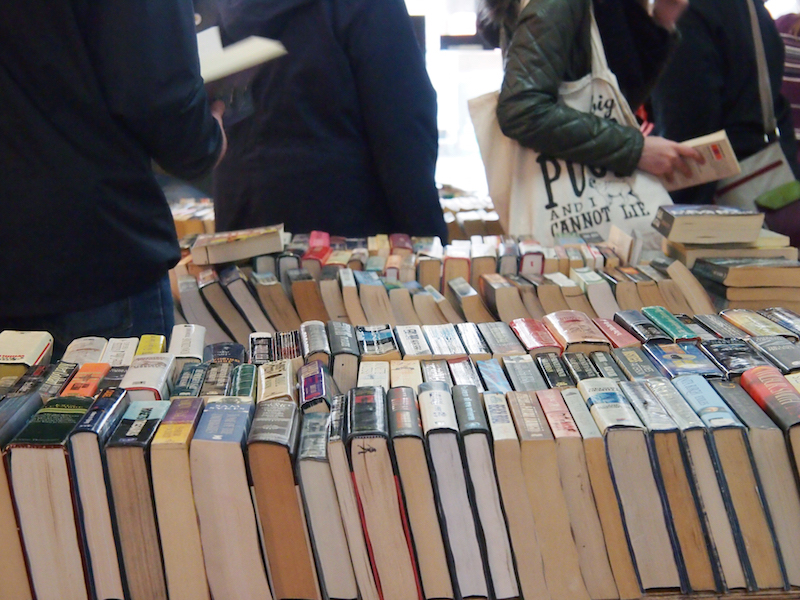
On self doubt
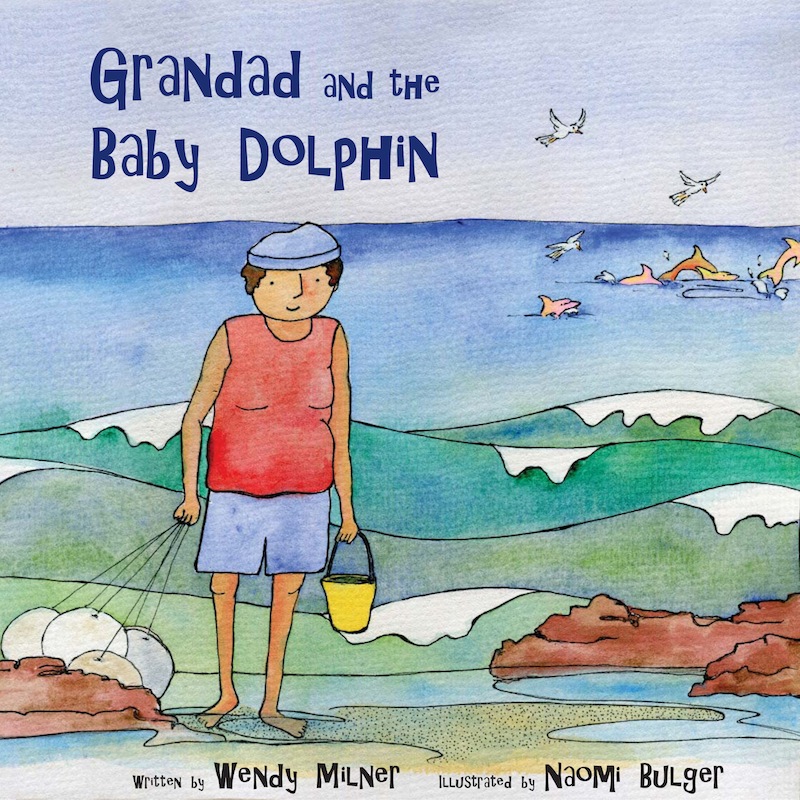
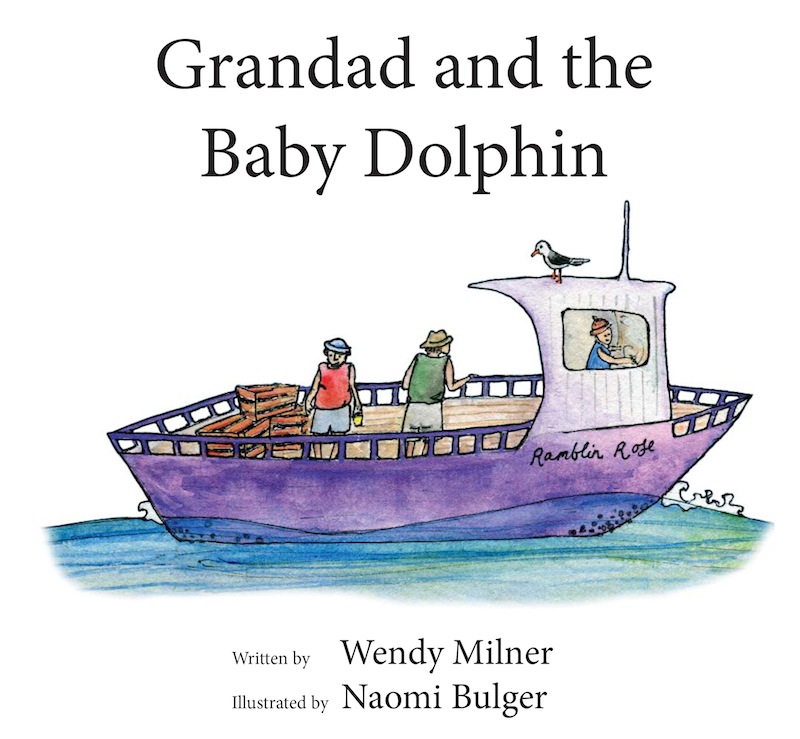
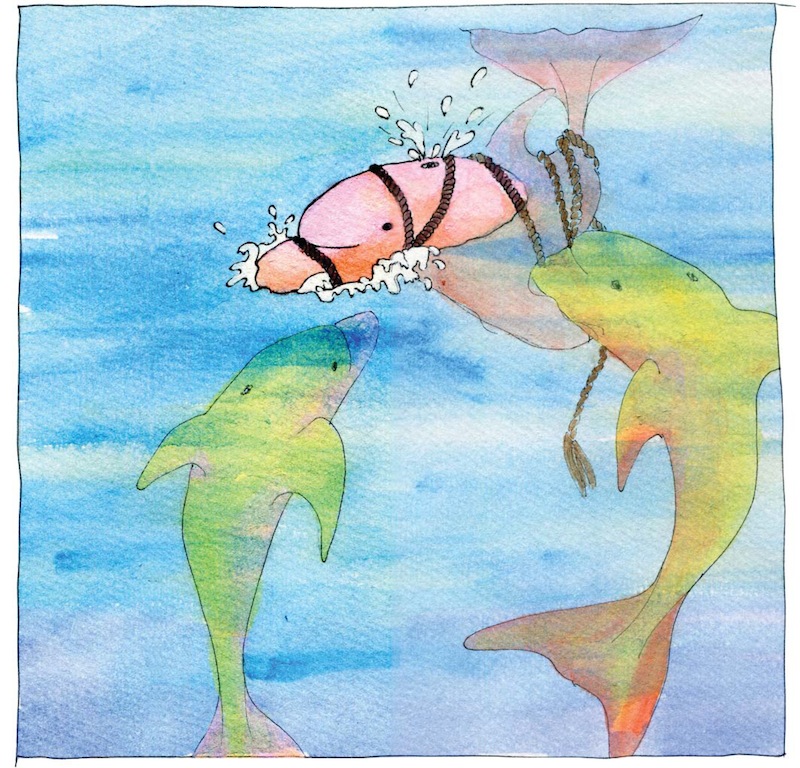
Oh hey. I have illustrated a children's book! It's called Grandad and the Baby Dolphin, and was written by the very talented Wendy Milner. The book will come out in November this year, and you can find out more (or pre-order a copy) here.
I am simultaneously proud and embarrassed to share these pictures with you.
Self doubt is a funny thing, isn't it. You do your very best and at some level (an important level!) you are proud of what you have done. And then on the other hand you look at your own work and then you look at what everyone else is doing and suddenly you feel like a complete fraud. Not to mention a failure.
Sound familiar? I feel like maybe crippling self-doubt is the default position of creatives. And by "creatives" I mean anyone who steps out into the public with something they have made: writers, artists, entrepreneurs, researchers... you name it. We all question ourselves, our abilities, our capacity, all the time but especially at the eleventh hour.
I have to fight my self-deprecating instincts as I share these illustrations with you. I hold myself up against the pantheon of talented, experienced illustrators in the children's book-publishing world and frankly I feel absurd.
Last week when Wendy said "We are finished!" and sent me a digital proof of the book, I vibrated with pride all evening. I kept looking through the images and reading them alongside her wonderful story and I felt as though together, we had created something really special.
That lasted for several hours, until I went to bed.
Then I closed my eyes and, immediately in my imagination, the whole world sat in a stadium, me alone and spotlit on a field way below, and everybody bellowed "WHO ARE YOU to think you could illustrate ANYTHING?" I am a writer, not an artist, and my sleepy self knew it. So did everybody else. "DERIVATIVE," the World shouted from the stands, "NAIVE." And "BORING" and "UNIMAGINATIVE" and "AMATEUR."
But do you know what? Get thee behind me, Naomi's Imagination World. I, like so many creative people before me and so many more to come, am going to own what I have made, and own it with pride. Wendy's prose is flawless. Her story is beautiful, and engaging, and entertaining, in all the right parts. I told it to my children for the first time a little while ago, holding up my paintings as I went along, and their simple response at the end was, "Again?"
And I am an illustrator. There, I will say it. I am a children's book illustrator, and I am lucky enough that my first book illustration project was for something as special as this beautifully-written tale of love and family and caring and joy.
I bet you are creative, too. Do you struggle to own it, trust it, believe in it? What should you be proud of today?
Secret worlds
 “Everybody has a secret world inside of them. I mean everybody. All of the people in the whole world, I mean everybody — no matter how dull and boring they are on the outside. Inside them they've all got unimaginable, magnificent, wonderful, stupid, amazing worlds... Not just one world. Hundreds of them. Thousands, maybe.”
“Everybody has a secret world inside of them. I mean everybody. All of the people in the whole world, I mean everybody — no matter how dull and boring they are on the outside. Inside them they've all got unimaginable, magnificent, wonderful, stupid, amazing worlds... Not just one world. Hundreds of them. Thousands, maybe.”
Credits:
* Beautiful, inspiring quote that is motivating me today, by Neil Gaiman (from The Sandman Vol 5: 'A Game of You').
* Moment in time captured at Grand Central Station, New York, by Thomas Lefebvre, licensed for unlimited use under Creative Commons.
Find time for yourself
 Find time for yourself.
Feel it no shame at proper periods to be doing nothing.
Make seasons for leisure and for recreation.
Climb the hills; scour the valleys; row on the river; stroll along the beach.
Cultivate the friendship of the fields and the ferns and the flowers.
Laugh with the young folk and romp with little children.
Be at your ease.
Let the mind swing into an easy balance, a natural poise, an attitude of perfect repose.
The restless soul, eternally doing something, never accomplishes anything.
It is the person who can sometimes be at rest who produces the finest work in the long run.
Find time for yourself!
Find time for yourself.
Feel it no shame at proper periods to be doing nothing.
Make seasons for leisure and for recreation.
Climb the hills; scour the valleys; row on the river; stroll along the beach.
Cultivate the friendship of the fields and the ferns and the flowers.
Laugh with the young folk and romp with little children.
Be at your ease.
Let the mind swing into an easy balance, a natural poise, an attitude of perfect repose.
The restless soul, eternally doing something, never accomplishes anything.
It is the person who can sometimes be at rest who produces the finest work in the long run.
Find time for yourself!
This piece was shared by Pip Lincolne recently at the end of a fun (and timely, for me) list of pick-me-up things to do when you're not feeling so great. FW Boreham was one of the most prolific and celebrated Australian authors of all time, although he is lesser-known today, and Pip recently discovered he was also her great grandfather.
I hope she doesn't mind me sharing his words again here. I found them so refreshing: the permission and indeed encouragement to take time out. To do nothing. Recognising the value and importance of down-time, not only for productivity (which is of course important), but also simply for happiness!
When you consider that FW Boreham was writing from a Baptist perspective during a time when the Protestant work ethic was at its height, you can perhaps appreciate even more how revolutionary, intelligent and kind those words must have been to those who read them back then, as well as now.
And I have been taking time out. I've been coughing and crafting and reading and writing in not-quite-equal measure. I've been romping with little children. I've been going to bed early. Sometimes. I've given myself permission to not have to update this blog quite so often, although I miss it, and hopefully soon all that "time out" will lead to more productivity, here and elsewhere. We will see. I'm not pushing myself!
In the meantime, THANK YOU Pip and Frank (FW). This was exactly what I needed to read this morning, to start the day in the best possible way. I hope it helps you guys, too.
Photo is by Mikael Kristenson, and is licensed for use under Creative Commons Zero
8 books about snail mail
 Do you want to read somebody else's mail? It's not a crime if the letters are in a book! If you’re looking for something to read and are feeling nostalgic for a bit of old-school snail-mail, here’s a list you might enjoy, of some of my favourites.
Do you want to read somebody else's mail? It's not a crime if the letters are in a book! If you’re looking for something to read and are feeling nostalgic for a bit of old-school snail-mail, here’s a list you might enjoy, of some of my favourites.
84 CharingCross Road by Helene Hanff
Why I like it: I picked up this book in a second-hand bookshop purely on the basis that the cover looked a lot like the cover of my own book Airmail, which had just come out. It turned out to be the most beautiful, heartwarming, true story of unlikely pen-pals, spanning decades.
On the back: 84, Charing Cross Road is a charming record of bibliophilia, cultural difference, and imaginative sympathy. For 20 years, an outspoken New York writer and a rather more restrained London bookseller carried on an increasingly touching correspondence. In her first letter to Marks & Co., Helene Hanff encloses a wish list, but warns, "The phrase 'antiquarian booksellers' scares me somewhat, as I equate 'antique' with expensive." Twenty days later, on October 25, 1949, a correspondent identified only as FPD let Hanff know that works by Hazlitt and Robert Louis Stevenson would be coming under separate cover. When they arrive, Hanff is ecstatic--but unsure she'll ever conquer "bilingual arithmetic." By early December 1949, Hanff is suddenly worried that the six-pound ham she's sent off to augment British rations will arrive in a kosher office. But only when FPD turns out to have an actual name, Frank Doel, does the real fun begin. Two years later, Hanff is outraged that Marks & Co. has dared to send an abridged Pepys diary. "i enclose two limp singles, i will make do with this thing till you find me a real Pepys. THEN i will rip up this ersatz book, page by page, AND WRAP THINGS IN IT." Nonetheless, her postscript asks whether they want fresh or powdered eggs for Christmas. Soon they're sharing news of Frank's family and Hanff's career.
Guernsey Literary and Potato Peel Pie Society by Mary Ann Shaffer & Annie Barrows
Why I like it: I was late to the fan club for this book. People kept telling me to read it and I could tell I would enjoy it but somehow I never seemed to get around to picking it up. Last week I went into Readings and asked for "The book with the guernsey and the potatoes" and they knew exactly what I meant. Now I'm half way through and just can't put it down.
On the back: “I wonder how the book got to Guernsey? Perhaps there is some sort of secret homing instinct in books that brings them to their perfect readers.” January 1946: London is emerging from the shadow of the Second World War, and writer Juliet Ashton is looking for her next book subject. Who could imagine that she would find it in a letter from a man she’s never met, a native of the island of Guernsey, who has come across her name written inside a book by Charles Lamb…
As Juliet and her new correspondent exchange letters, Juliet is drawn into the world of this man and his friends—and what a wonderfully eccentric world it is. The Guernsey Literary and Potato Peel Pie Society—born as a spur-of-the-moment alibi when its members were discovered breaking curfew by the Germans occupying their island—boasts a charming, funny, deeply human cast of characters, from pig farmers to phrenologists, literature lovers all.
Juliet begins a remarkable correspondence with the society’s members, learning about their island, their taste in books, and the impact the recent German occupation has had on their lives. Captivated by their stories, she sets sail for Guernsey, and what she finds will change her forever.
Written with warmth and humor as a series of letters, this novel is a celebration of the written word in all its guises, and of finding connection in the most surprising ways.
Airmail by Naomi Bulger (yes that’s me!)
Why I like it: I wrote this book and even after all these years, I'm still proud of it. It's about so many things that I love: snail-mail, storytelling, New York, love, and a little bit of magic in everyday life.
On the back: Reclusive old Mr. G.L. Solomon's favorite things are single malt whiskey, Steve McQueen movies, and gingersnap cookies. He hates processed cheese, washing detergent commercials, and the way the teacup rattles in the saucer when he picks it up. Solomon has become accustomed to his lonely routine in Sydney, Australia-until the day he begins sporadically receiving letters in his mailbox from a complete stranger. On the other side of the world, Anouk is a mentally delicate young woman living in New York who insists she is being stalked by a fat woman in a pink tracksuit. When Anouk declares to Solomon that she is writing "from the Other Side," the old man breaks away from his daily grind of watching soap operas and reading "Fishing World" and travels to New York to find her. As he is drawn into Anouk's surreal world of stalkers and storytelling, marbles and cats, purgatory and Plato, Solomon has but one goal-to unravel the mystery before it is too late.
Possession by A.S.Byatt
Why I like it: Romance and mystery, unfolding piece by piece in letters, notes and poems. I love that the written word can contain and keep alive powerful emotions - like love and possession - long after the lover is gone. And I love the idea of notes and letters, scattered throughout history as clues left for the future.
On the back: Possession is an exhilarating novel of wit and romance, at once an intellectual mystery and triumphant love story. It is the tale of a pair of young scholars researching the lives of two Victorian poets. As they uncover their letters, journals, and poems, and track their movements from London to Yorkshire—from spiritualist séances to the fairy-haunted far west of Brittany—what emerges is an extraordinary counterpoint of passions and ideas.
The Jolly Postman by Janet & Allan Ahlberg
Why I like it: This one is a classic! Did you read it as a kid? The postman visits all your fairy-tale favourites and delivers their mail. It's gorgeously interactive as you get to lift the letters out of their envelopes to read them. I think the witch's shopping catalogue is my favourite.
On the back: Join the Jolly Postman as he goes on his rounds via bicycle, delivering mail to Goldilocks, Cinderella, Jack's Giant, and other fairy-tale characters. Tucked into envelopes are actual letters for children to pluck out. Humorous and engaging, this is the perfect read over a spot of tea. Ahhh!
Snail Mail by Michelle Mackintosh
Why I like it: Only released earlier this month, Snail Mail is a stunningly illustrated celebration of snail mail, with a whole lot of how-to know-how and inspiration for anyone who wants to revive the lost art of writing letters (and do it really well). The author is a neighbour of mine and I can't believe I didn't know it at the time, but she invited people to send her mail-art to be included in the book. If you look in the front fly-leaf, there's a photo of Michelle and her cat in front of a wall of beautiful mail-art. And when I squint, I recognise names on there, of friends and people I admire. So sweet!
On the back: Snail Mail reintroduces the lost pleasure and art of personal correspondence, beautiful presentation, and manners to today’s world of instant communication. In a world of 140-character limits, Snapchats, text-speak, and internet trolls, are we losing the ability to really communicate with our loved ones Snail Mail aims to bring back handwritten communication—and more—in one beautifully illustrated and perfectly proper little package. Inspired by Japanese stationery and letter-writing culture, Michelle Mackintosh introduces the reader to the charm of the handwritten letter, personalized packages, and handcrafted stationery. Beautifully illustrated and complete with cutout postcard designs, papercraft, and rubber stamp templates, Snail Mail is full of equally useful and whimsical advice, like how to say thank you in a letter and other old-school etiquette; how to take time and reflect on your life through writing; how to improve and celebrate your own handwriting; how to make your own paper; how to romance someone the old-school way; how to make pen friends and DIY beautiful invitations for any occasion. It’s time to take back the written word!
To the Letter by Simon Garfield
Why I like it: This book was a surprise gift, sent to me via snail mail (of course) from Rachel Cox. I love that the author likens the act of writing and sending snail mail to kindness, because of the time and effort and thought required. I wrote about it when I first opened the book, here.
On the back: Few things are as exciting—and potentially life-changing—as discovering an old letter. And while etiquette books still extol the practice, letter writing seems to be disappearing amid a flurry of e-mails, texting, and tweeting. The recent decline in letter writing marks a cultural shift so vast that in the future historians may divide time not between BC and AD but between the eras when people wrote letters and when they did not. So New York Times bestselling author Simon Garfield asks: Can anything be done to revive a practice that has dictated and tracked the progress of civilization for more than five hundred years?
In To the Letter, Garfield traces the fascinating history of letter writing from the love letter and the business letter to the chain letter and the letter of recommendation. He provides a tender critique of early letter-writing manuals and analyzes celebrated correspondence from Erasmus to Princess Diana. He also considers the role that letters have played as a literary device from Shakespeare to the epistolary novel, all the rage in the eighteenth century and alive and well today with bestsellers like The Guernsey Literary and Potato Peel Pie Society. At a time when the decline of letter writing appears to be irreversible, Garfield is the perfect candidate to inspire bibliophiles to put pen to paper and create “a form of expression, emotion, and tactile delight we may clasp to our heart.”
Floating Worlds by Edward Gorey & Peter Neumeyer
Why I like it: This book was another surprise gift in the mail, from my dear friend and author Ruby Blessing, and it is the book that got me excited and inspired about sending mail-art. It is simply beautiful to read, and even better to look at.
On the back: Edward Gorey and Peter Neumeyer met in the summer of 1968. Gorey had been contracted by Addison-Wesley to illustrate "Donald and the...," a childrens story written by Neumeyer. On their first encounter, Neumeyer managed to dislocate Goreys shoulder when he grabbed his arm to keep him from falling into the ocean. In a hospital waiting room, they pored over Goreys drawings for the first time together, and Gorey infused the situation with much hilarity. This was the beginning of an invigorating friendship, fueled by a wealth of letters and postcards that sped between the two men through the fall of 1969.Those letters, published here for the first time, are remarkable in their quantity and their content. While the creative collaborations of Gorey and Neumeyer centered on illustrated books, they held wide-ranging interests; both were erudite, voracious readers, and they sent each other many volumes. Reading their discussions of these books, one marvels at the beauty of thoughtful (and merry) discourse driven by intellectual curiosity.
The letters also paint an intimate portrait of Edward Gorey, a man often mischaracterized as macabre or even ghoulish. His gentleness, humility, and brilliance--interwoven with his distinctive humor--shine in these letters; his deft artistic hand is evident on the decorated envelopes addressed to Neumeyer, 38 of which are reproduced here.
During the time of their correspondence, Peter Neumeyer was teaching at Harvard University and at SUNY Stony Brook, on Long Island. His acumen and compassion, expressed in his discerning, often provocative missives, reveal him to be an ideal creative and intellectual ally for Gorey.
More than anything else, Floating Worlds is the moving memoir of an extraordinary friendship. Gorey wrote that he felt that they were “part of the same family, and I don’t mean just metaphorically. I guess that even more than I think of you as a friend, I think of you as my brother.” Neumeyer stated, “Your letters . . . your existence has made something of this world that [it] hadn’t the possibility of before.”

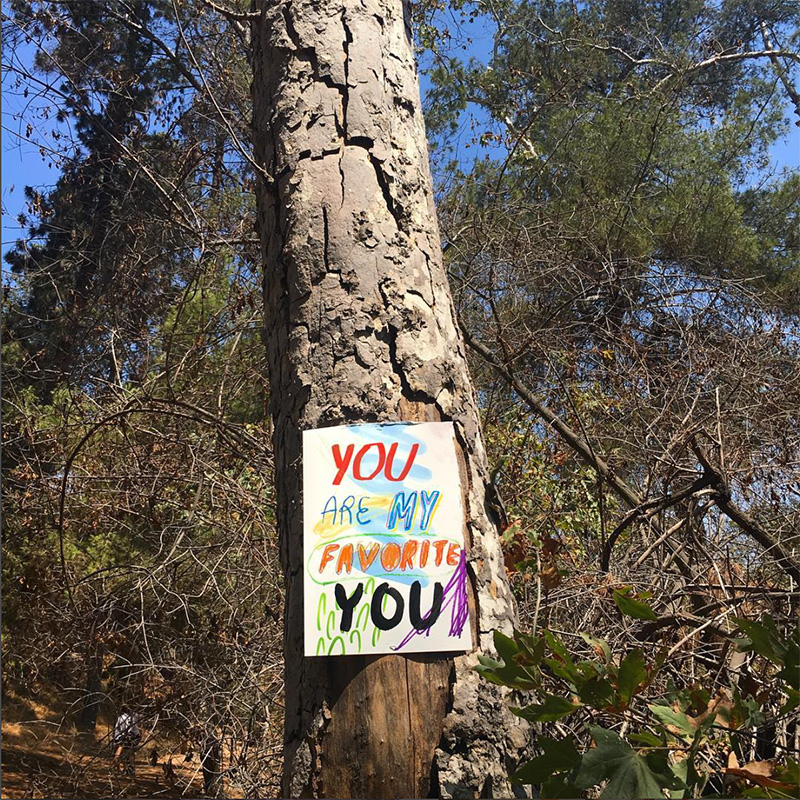

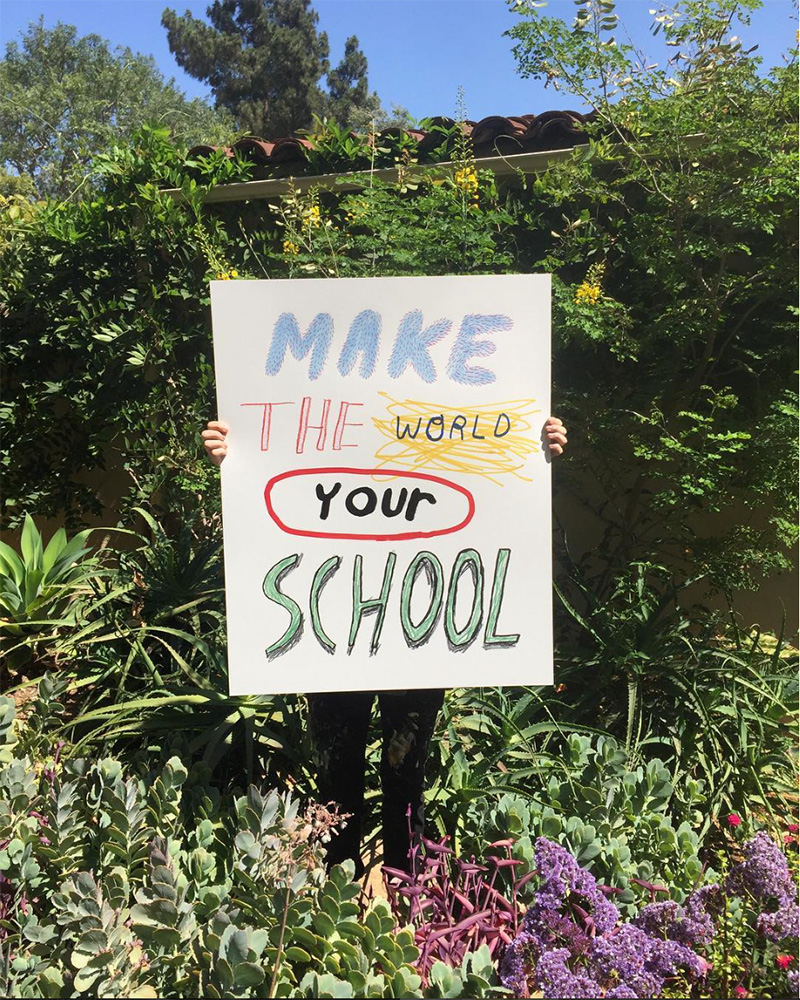
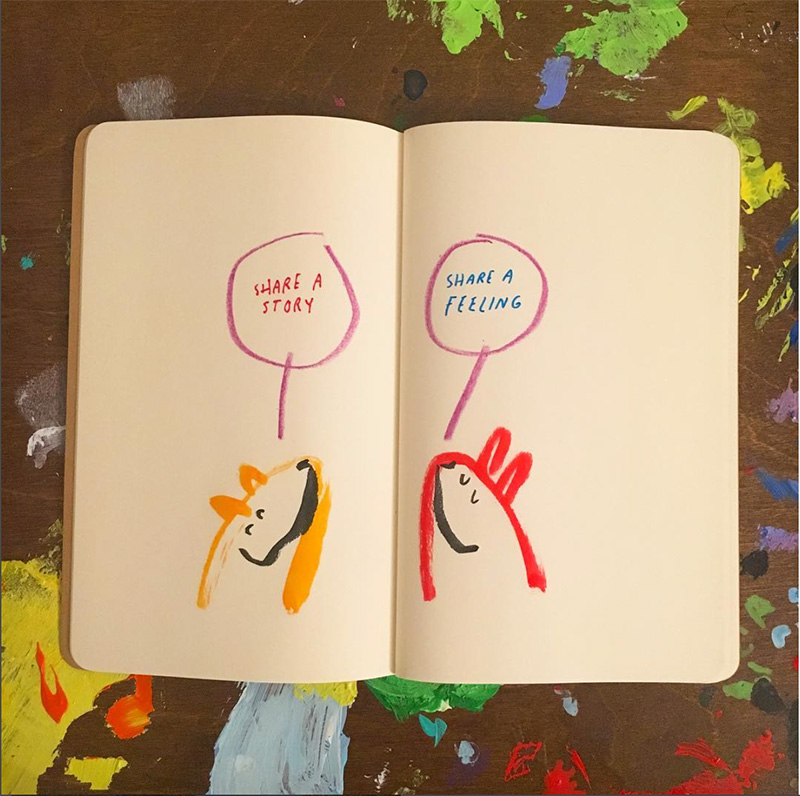
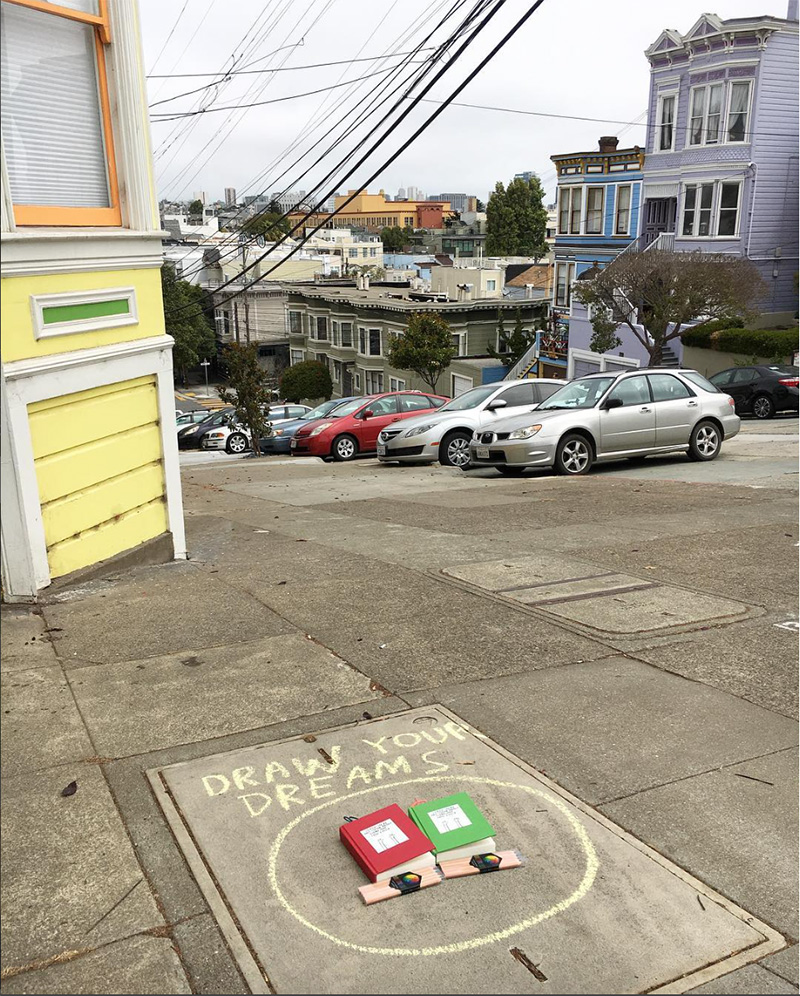
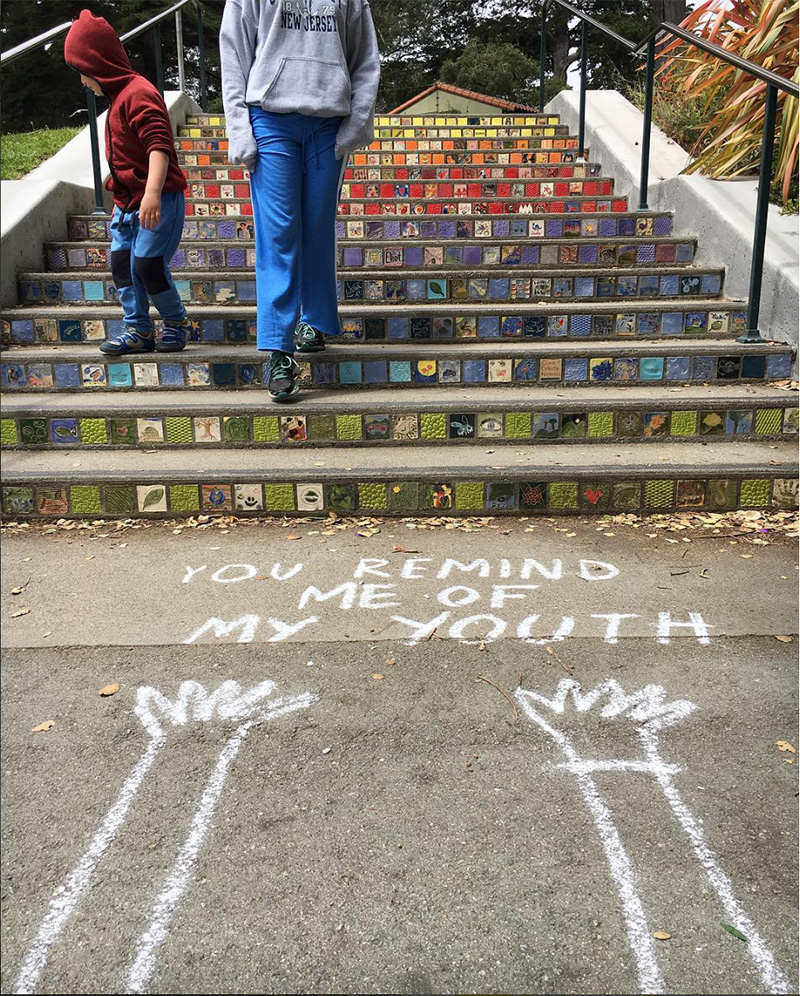
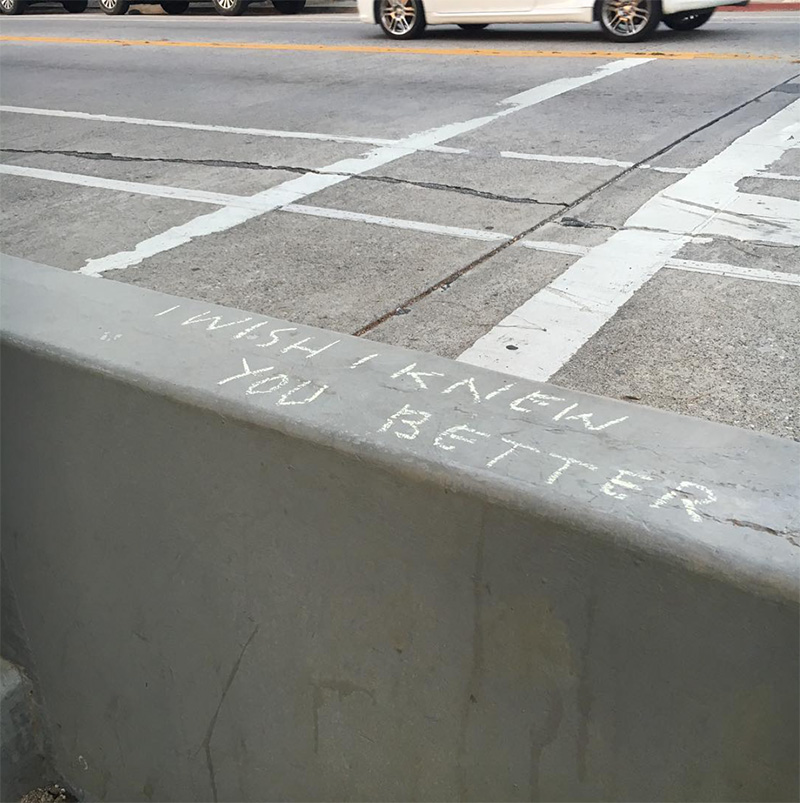
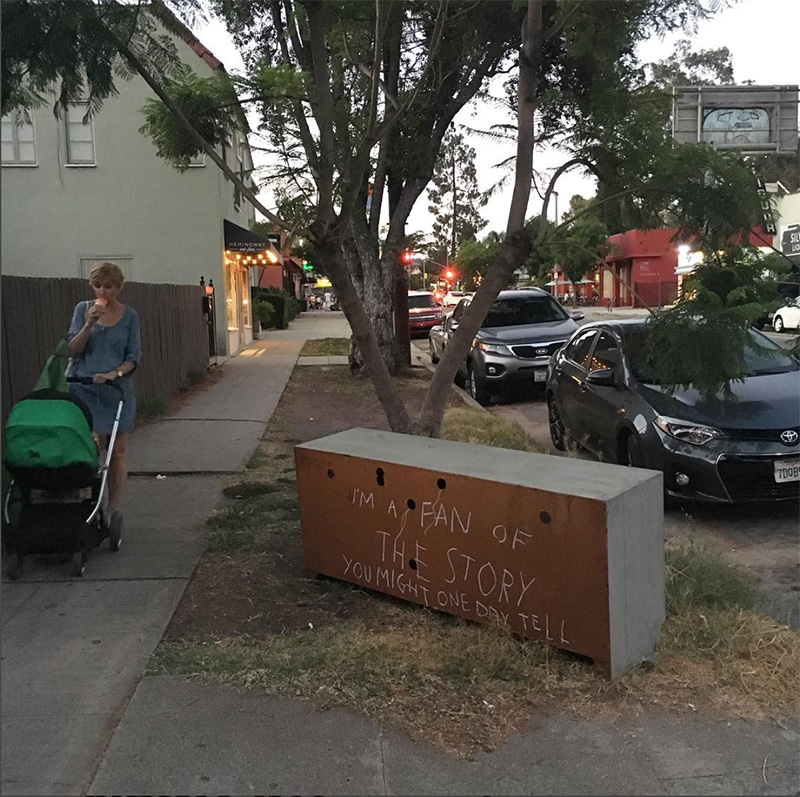
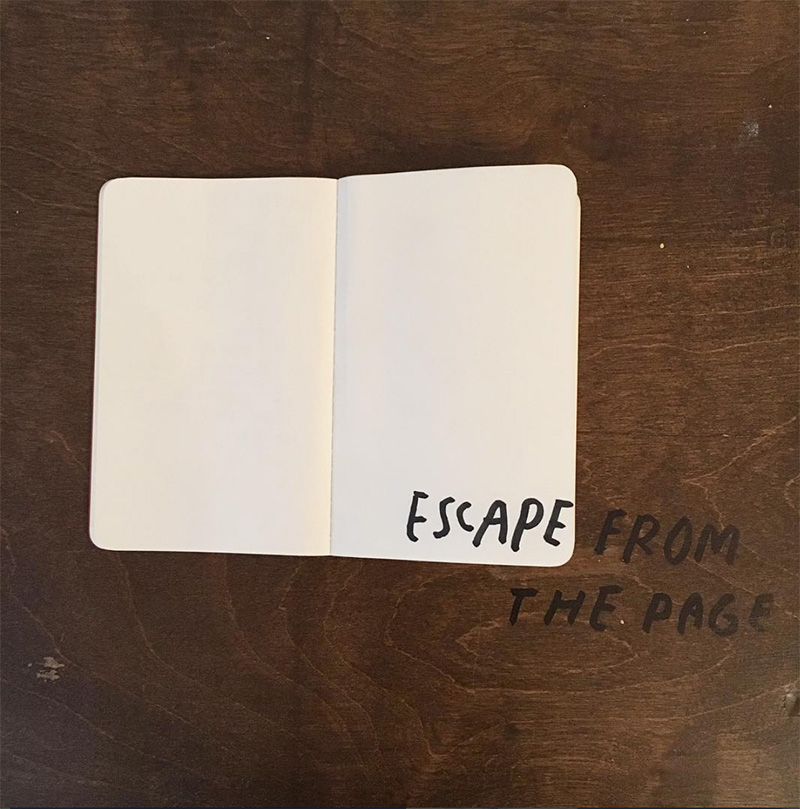
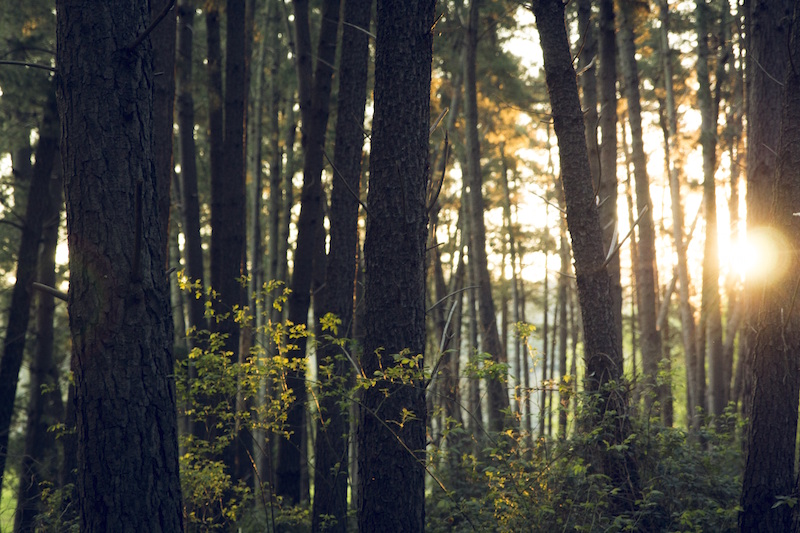 (Image credit:
(Image credit: